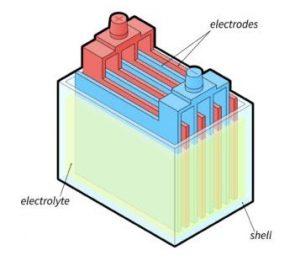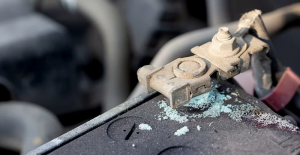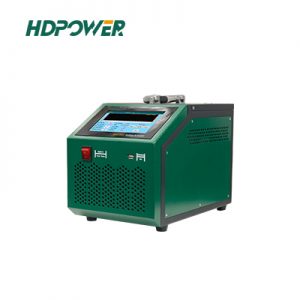1.What is battery sulfation?
Sulfation is one of the most common causes of performance loss in lead-acid batteries. When a battery is discharged, lead sulfate naturally forms on the plates as part of the chemical reaction. Under normal charging conditions, this sulfate dissolves back into the electrolyte. However, if the battery remains in a partially charged or deeply discharged state for an extended period, the lead sulfate crystals harden and become difficult to reverse. This phenomenon is called sulfation. Over time, these crystals grow larger and cover more surface area of the battery plates, reducing their ability to participate in chemical reactions. Sulfation can occur in automotive starter batteries, UPS systems, solar energy storage, and other applications where batteries are not fully charged regularly.

2. How does sulfation affect a lead-acid battery?
The buildup of hardened lead sulfate crystals has several negative effects. First, it decreases the active surface area inside the battery, which means the battery cannot store as much energy as before. Second, the internal resistance rises, causing the battery to heat up during charging and reducing its efficiency. As sulfation worsens, users may notice that the battery takes longer to charge, holds less charge, or cannot provide sufficient current for demanding loads. In severe cases, the battery voltage drops so low that traditional chargers cannot even start the charging process. Many people assume these batteries are completely dead and replace them prematurely, leading to unnecessary costs. For businesses and industries that depend on reliable power, sulfation can also cause operational delays, equipment shutdowns, and expensive downtime.

3. What are the methods to desulfate a battery?
There are several approaches to removing or reducing sulfation in lead-acid batteries. A traditional method is overcharging at a low current for an extended period, but this must be done carefully to avoid overheating and damage. Another option is chemical additives, which claim to dissolve sulfate buildup, though these often provide limited results and may harm the battery’s internal structure. A more modern and effective solution is using an electronic Battery Activator. This device sends high-frequency, controlled electrical pulses into the battery, breaking down hardened lead sulfate crystals and restoring them to an active state. By applying the correct pulse waveform, a Battery Desulfator can desulfate batteries without causing damage to the plates or electrolyte. Compared with manual charging methods, it is faster, safer, and more consistent. Many professionals use Battery Desulfator as part of preventive maintenance to extend battery life, improve charging efficiency, and reduce replacement costs.
4. Using the Battery Desulfator to Desulfate Lead-Acid Batteries
For users seeking a reliable and efficient way to desulfate lead-acid batteries, the HDGC3932 Battery Desulfator offers a smart solution. This device applies high-frequency pulse technology to break down hardened lead sulfate, restoring battery capacity and extending service life. With intelligent charge/discharge modes, real-time data recording, and built-in safety protections, it works equally well for automotive batteries, UPS systems, telecom base stations, and solar energy storage. Compared with manual charging or chemical additives, the HDGC3932 is faster, safer, and more consistent—making it an ideal tool for preventive maintenance and cost savings.

This Battery Desulfator isn’t just a gadget—it’s a maintenance game-changer. With HS-grade safety, precise control, and smart automation, it embodies the ultimate tool for reversing sulfation and reviving lead-acid batteries.
If you’re ready to upgrade your battery maintenance strategy, consider integrating the HDGC3932 Battery Desulfator into your workflow. It’s not just a desulfating solution—it’s an investment in reliability, longevity, and predictive power management.
Ready to learn more or request a demo? Reach out to us today to explore specifications, compliance options, and tailored solutions—your batteries (and your budget) will thank you.





